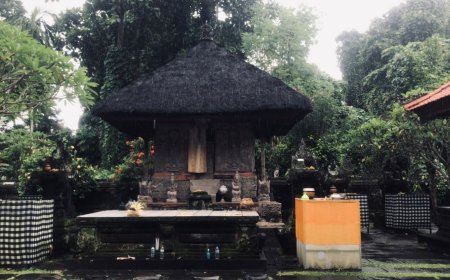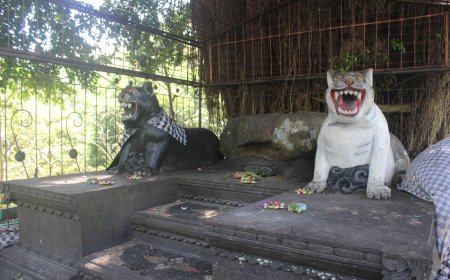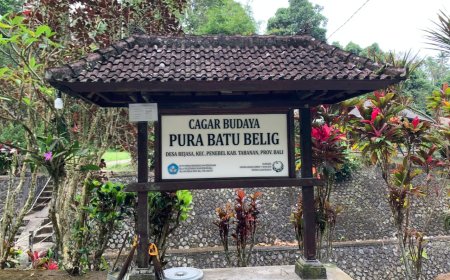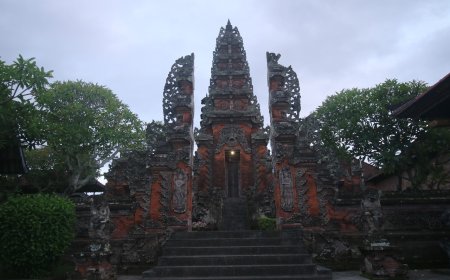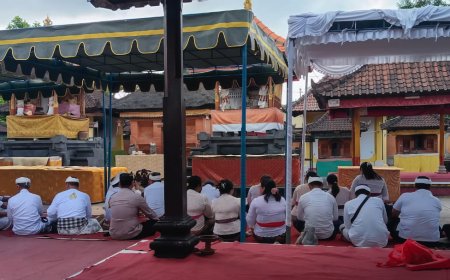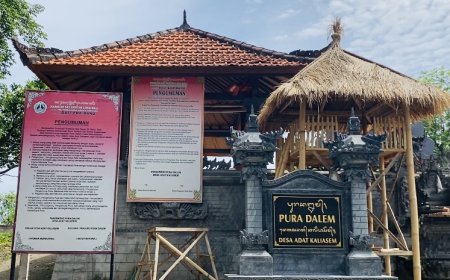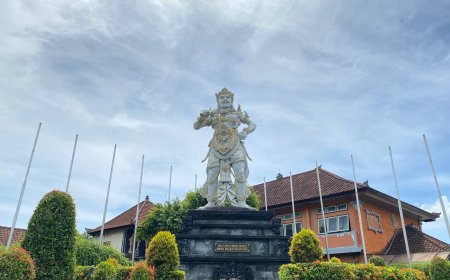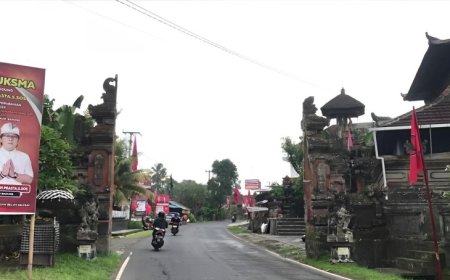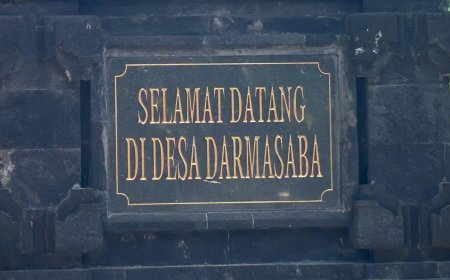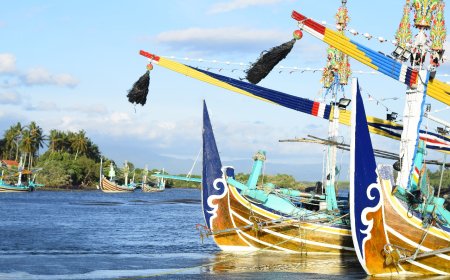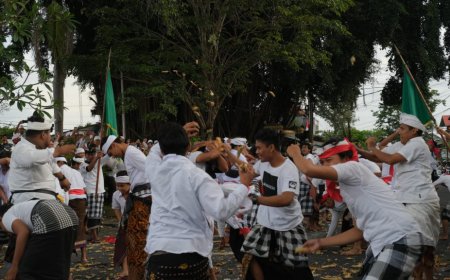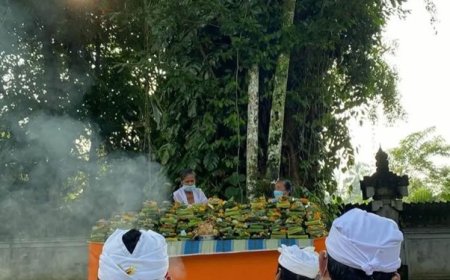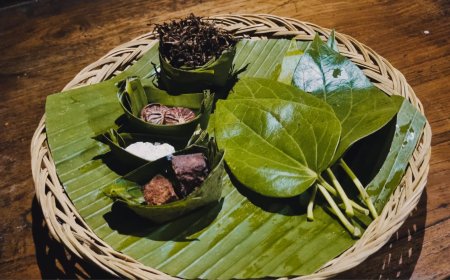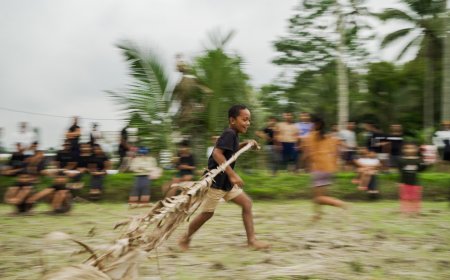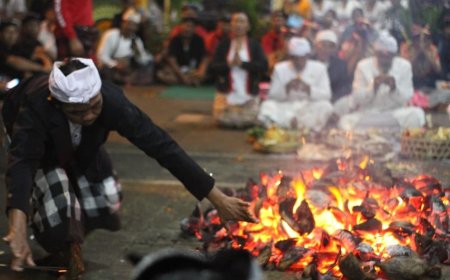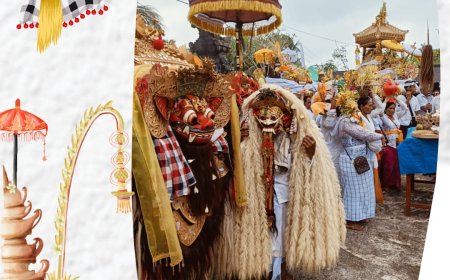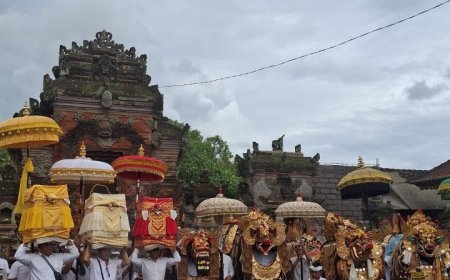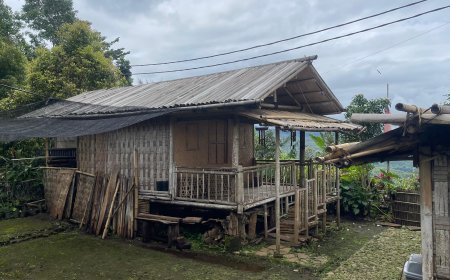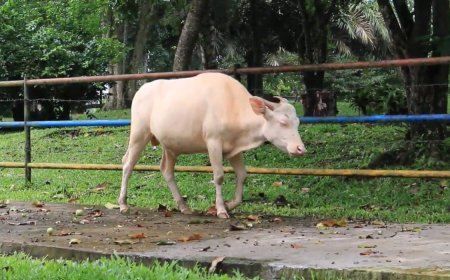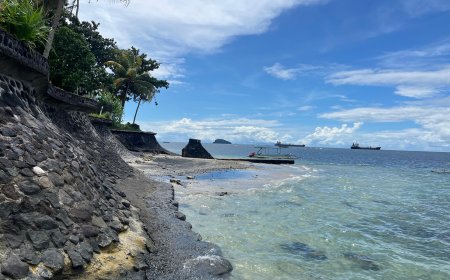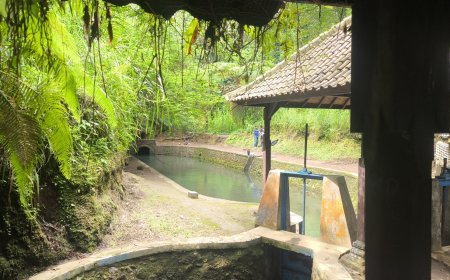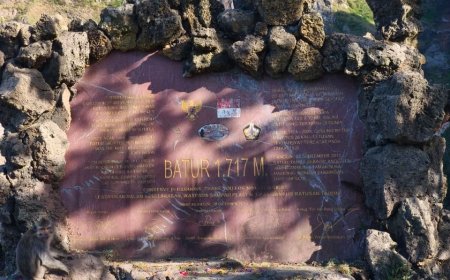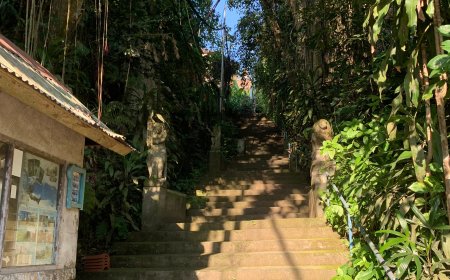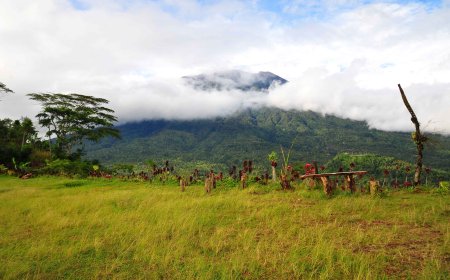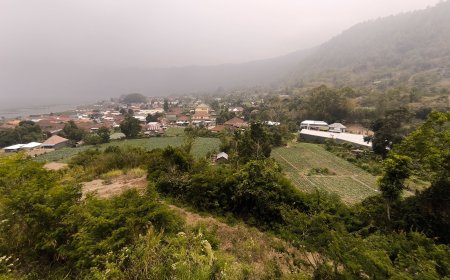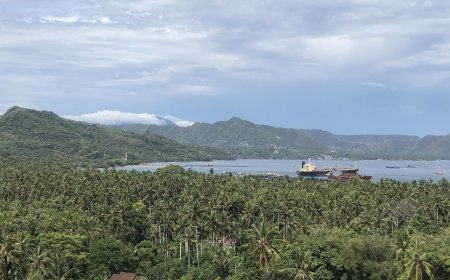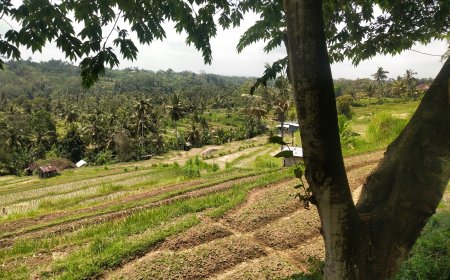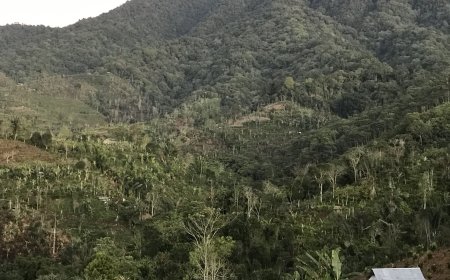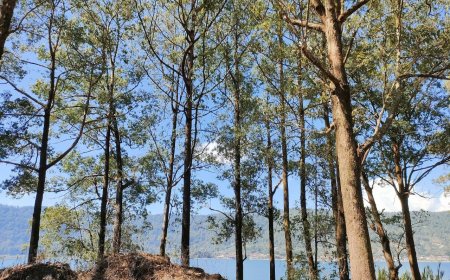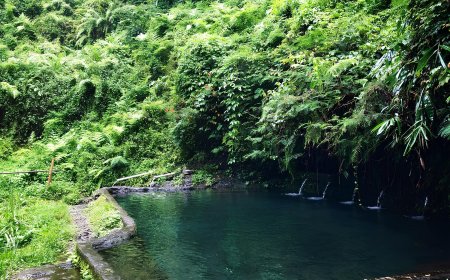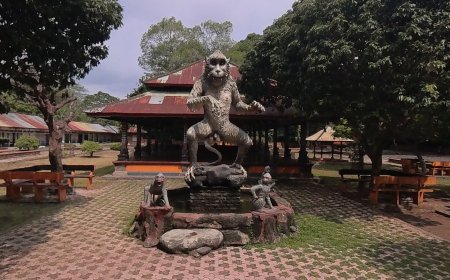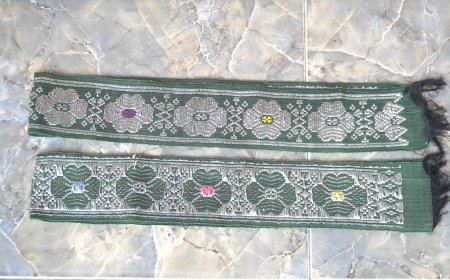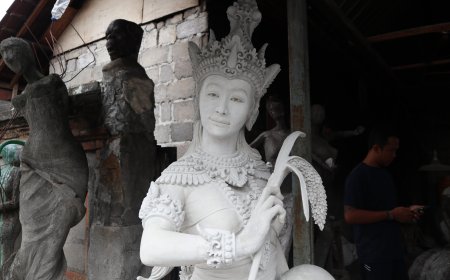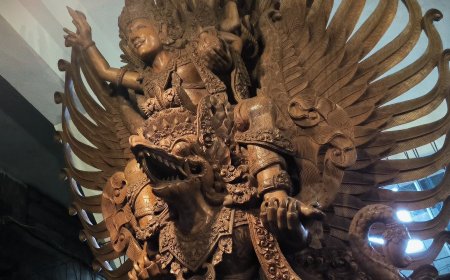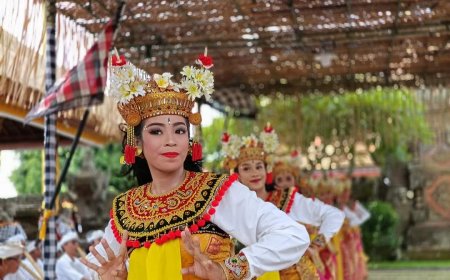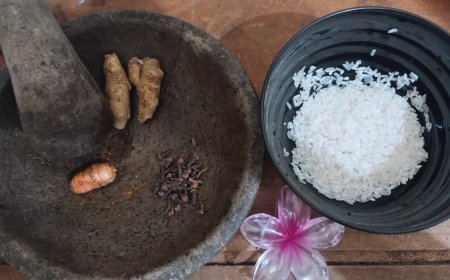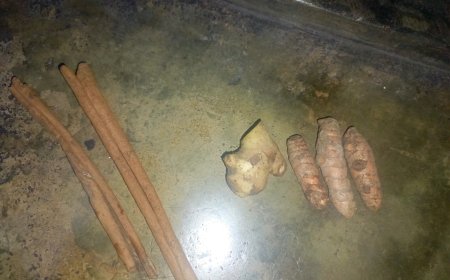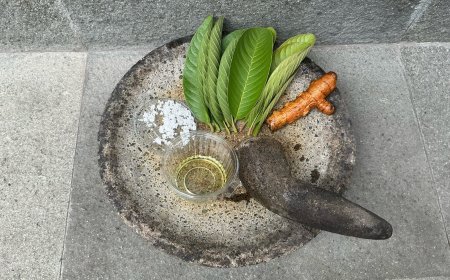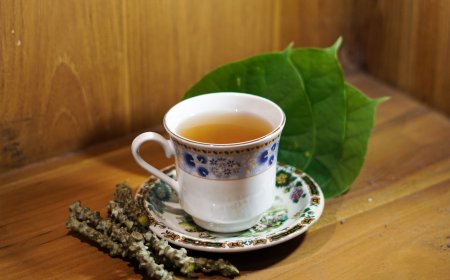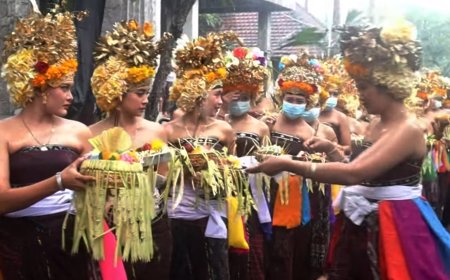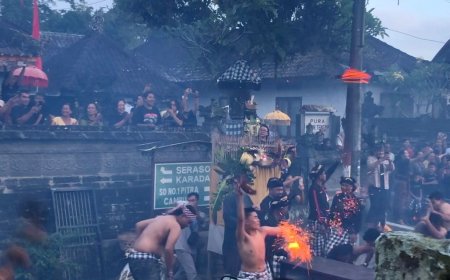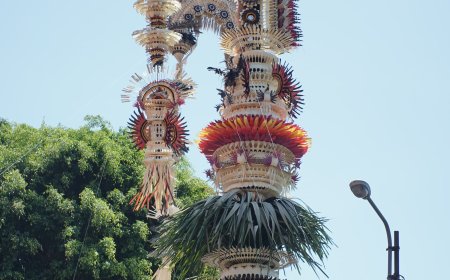Lampad Tradition: Sublime Offerings in the Pangsan Traditional Village
Exploration of the Lampad Tradition in the Pangsan Traditional Village, Bali, takes us on a sublime journey into cultural riches that are preserved with great warmth. With great enthusiasm, Truna and Daha safeguard their ancestral heritage through meaningful rituals, from the process of making lampads to offerings at Penataran Agung Temple. Involving natural elements, each lampad is a symbol of harmony between humans and nature, reflecting gratitude and appreciation for nature's gifts. Discover the beauty and uniqueness of the Lampad Tradition, a noble offering that is an inseparable part of the identity of Pangsan Traditional Village.
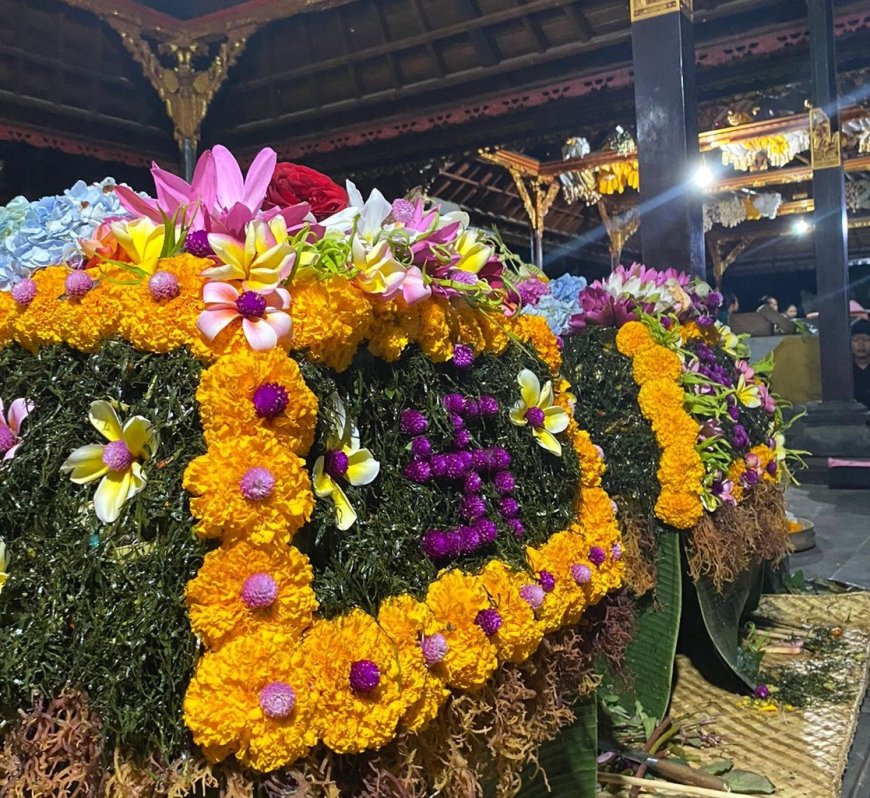
Bali, which is famous for its natural beauty and cultural richness, holds a number of unique traditions in each village. One interesting tradition to explore is the Lampad Tradition from the Pangsan Traditional Village, especially at Penataran Agung Temple. Penataran Agung Temple is located in Pangsan Village, Petang District, Badung Regency, Bali. The Lampad tradition is a process of offering dishes in the form of lampad or all kinds of vegetables in the Pangsan Village area, especially in the Banjar Sekarmukti lan Pundung area. This tradition is carried out by youth organizations or teenagers, both men and women, where the men are called Truna and the women are called Daha.
This tradition involves a number of activities, such as sweeping or cleaning grass and rubbish in the temple area, ngayah or mutual cooperation during piodalan, and the most unique is pesangkepan. Pesangkepan itself is the process of offering a dish in the form of lampad, as an offering to the sesuhunan located at the Penataran Agung Temple, and is carried out every Full Moon Day.
The process of making lampads begins the day before Full Moon Day. The materials needed to make lampads were taken from around the Banjar Sekarmukti lan Pundung area, and interestingly, the local community supported the taking of materials by the Truna and Daha and no one dared to stop the Truna and Daha from doing so. The lampad ingredients that have been collected are then processed through various stages, such as boiling, frying, steaming, cutting and pounding, followed by the kneading process by adding a spice called Basa Manis. Uniquely, during the kneading process, the ingredients cannot be tasted at all.
After all the ingredients are ready, the dahas carry out the process of metanding or arranging the various offering materials so that they form a complete offering, and the dahas are required to be clean. The lampad metanding process is carried out by placing the lampad on a flat, namely the base of a canang which has a rectangular shape and symbolizes the body. This lampad arrangement includes various ingredients, starting from the bottom, namely fruits such as jackfruit and banana blossoms, followed by nuts such as ucu nuts and kecai nuts. On top of the beans, it is arranged with vegetables such as anti leaves and pumpkin leaves. At the very top, it is filled with bitter melon, pecans, bulung, and empol.
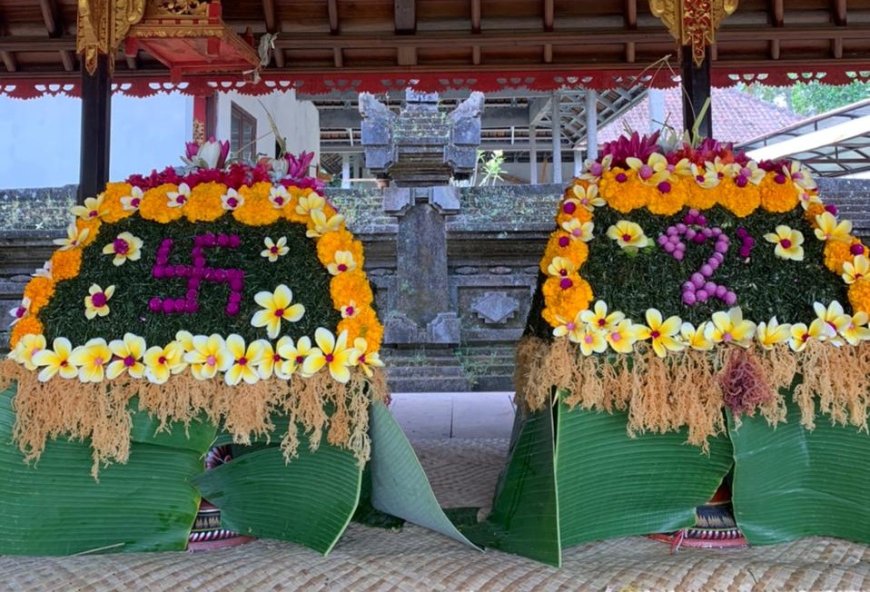
Lampad (Source: Author's Collection)
All the ingredients used in lampad represent the various flavors that exist in the human body. Next, after all the lampads have been matched, the lampads are arranged on two trays, each numbering 72 and 73 matches. After all the lampads are arranged, the lampads will be decorated with sabo leaves and various kinds of flowers. The lampad that has been completed will be presented at the Penataran Agung Temple, which is called the nyangkepin process, where Truna and Daha gather to pray.
The pesangkepan process will end by distributing lampad to all the daha truna present on the Full Moon Day. In the process of distributing lampad, Truna and Daha each received a lampad tanding with additional rice and steamed sticky rice wrapped in sewn palm leaves.
After the pesangkepan process, the atmosphere of togetherness in the Pangsan Traditional Village was increasingly felt. The Truna and Daha unite to complete the final process in the Lampad Tradition series. Each lampad distributed has its own meaning, representing the diversity and richness of nature around the Pangsan Traditional Village. Not only as a form of offering, lampad is also a symbol of solidarity and unity between communities. Through this sharing process, a close inner bond is established between them, strengthening a sense of togetherness and mutual respect.
Lampad is not only enjoyed as a delicious dish, but also as a representation of joint efforts in maintaining and celebrating ancestral traditions. In this moment, you can feel the warmth of the togetherness of family, neighbors and the entire Pangsan Traditional Village community who are united to maintain a very valuable cultural heritage.
The importance of the Lampad Tradition in strengthening local identity and preserving cultural values is also being understood by the young generation of Pangsan Traditional Village. The Truna and Daha are not only the main actors in keeping this tradition alive, but are also strong heirs in continuing the legacy of their ancestors. With great pride, they accept the responsibility to involve themselves in every stage of the Lampad Tradition, ensuring that this ritual remains uninterrupted and an integral part of their lives.
During the lampad distribution process, there was a loud noise of laughter and stories among the people of Pangsan Traditional Village. This moment is also the right time to share experiences and knowledge about their traditions. Thus, the Lampad Tradition in the Pangsan Traditional Village is not only a religious celebration, but also a form of local wisdom and togetherness that grows and develops from one generation to the next. The uniqueness and richness of this tradition is increasingly becoming an inspiration for the people of Bali and throughout the world to maintain and appreciate this cultural heritage which has deep value.
